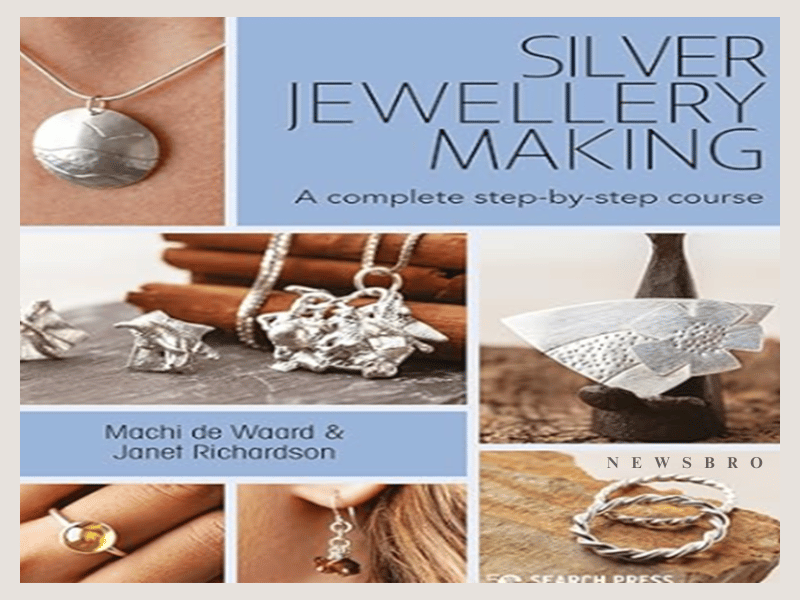The history of silver jewelry spans centuries, admired for its beauty, softness, and worth. Mastery of silver adornment is of great importance, but so too is the documentation of the process. This guide details the silver jewelry manufacturing process, quality assessments at each step, and the importance of reliable manufacturers for an efficient working relationship. For those seeking a fine jewelry supplier, visit SJ Jewellery to explore expert craftsmanship and trusted manufacturing solutions.
1. Introduction to Silver Jewelry
The affordability of 925 sterling silver and its quality make it a staple in jewelry. 925 sterling silver is 92.5% pure silver and 7.5% copper, which provides a bright white finish and durability. The wide range of designs includes simple patterns and elaborate designs with stones of various worth.
2. The Manufacturing Process
There are several steps in the making of silver jewelry.
a. Design and CAD Modeling
The process begins with a session of brainstorming. Some designers will pencil preliminary designs, which are then developed into CAD models. The models capture the design in a digital format where details can be adjusted before the item is actually made.
b. 3D Printing and Wax Casting
After the design is approved, a 3D printer produces a wax model of the design. This wax model is covered with a ceramic shell. The wax is then melted away, a process called lost-wax casting. The empty shell is then ready for metal casting.
c. Metal Casting
Molten sterling silver is poured into the cavity of the mold, which is where the wax model used to be. After the silver cools, the mold is taken apart, and the rough silver piece is revealed.
d. Cleaning and Polishing
The cast piece is cleaned to remove any remaining mold. The piece is then polished to a fine surface, enhancing the shine and preparing it for further detailing.
e. Stone Setting and Plating
When the design has gemstones, they are set in the silver base by skilled artisans. The piece can also be plated, with Rhodium for example, to improve the esthetic and to prevent tarnishing.
f. Quality Control and Final Inspection
Definitive and rigorous quality control is applied for every piece to ensure it meets the industry standards in craftsmanship, finish, durability, and overall design.
3. Importance of Quality Control
In the manufacture of silver jewelry, the application of quality control is of the utmost relevance. Leading manufacturers undertake the following testing procedures:
Testing for the Purity of the Material: Confirming the silver content is of 925 quality.
Coating Thickness Verification: Checking the uniformity and durability of the applied coating.
Testing for Strength and Endurance: Evaluation of resistance of clasps, settings, and the entire piece.
Aesthetic Judgments: Verification of surface finish, symmetry, and alignment of composite elements.
4. Sustainable Practices in Silver Jewelry Manufacturing
A number of manufacturers, prompted by ecologically sustainable development, implement the following:
Encapsulated Waste Silver: Working with encapsulated waste silver minimizes the ecological footprint.
Technologically Enhanced Energy Adoption: the application of energy-efficient technological paradigms in manufacturing.
Waste Minimization: Through efficient manufacturing, waste is minimized.
5. Sustainable Practices in Silver Jewelry Manufacturing
Reliable silver jewelry manufacturer are fundamental towards attaining quality and punctuality. When sourcing a partner, the following are of utmost importance:
Experience with and Reputation of the Manufacturer: Talented manufacturers seldom fail.
Bespoke Design Capability: The capacity for custom design and adaptation to your business.
Verification: Ensure the documents state quality and ethical fabrication.
For example, SJ Jewellery is a popular manufacturer of 925 sterling silver jewelry and offers numerous options like rings, bracelets, earrings, and necklaces in a variety of styles.
Conclusion
Making silver jewelry involves art and skill working in harmony. Each phase, from design straight through to polishing, is a crafted skill requiring focused care at every turn. Knowing how the process of making the jewelry works along with working with a good manufacturer will ensure high quality treasured silver jewelry will be made that will be popular and endure.

